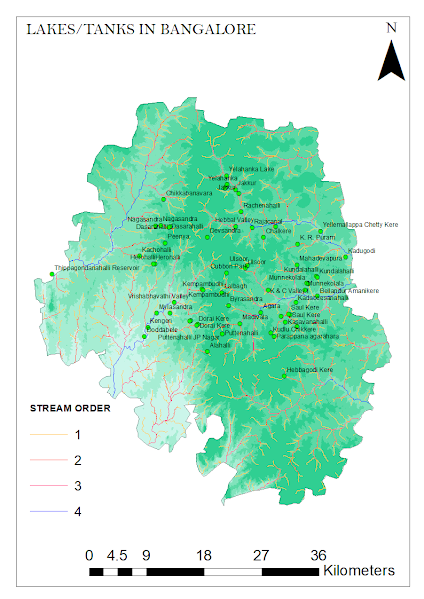Hosakere lake
Hosakere lake is situated in the Pichaguntahalli village of Kolar district in Karnataka. The total area of the lake is 19.18 acres.from last 2 year lake is maximum full to its capacity in august and september. The lake was desilted in 2003( JSYS+ world bank) and in 2021 slit is added back to the fields . as they are rich in nutrients. There is always a requirement of desiltation in the 8 to 9 year in a lake but it happens here after almost 18 year.for the desiltation process the local villager came forward to help in the process. The lady with whom we had interacted had more than 20 years of knowledge in the field of lakes. The demand can be made to the gram panchayat by the people for the betterment of the village. The daily Wages in the village is 297 to both men and women in the village by Nrega scheme.
Hose kere, Pichaguntahalli - Google Maps
Downstream of the lake is Doddakere, Yalagondahalli and upstream is Talakunte. Water came from the Talakunte to the lake.
Kolar is one among six permanently drought-prone districts in Karnataka. In 15 years to 2015, only three years in Karnataka–2005, 2007 and 2010–witnessed no drought, as per a 2017 Karnataka State Disaster Management Monitoring Centre’s drought vulnerability assessment report. The district has zero net groundwater for future use, and has the highest groundwater extraction – 211% – in the state, noted the 2017 Dynamic Groundwater Resources Assessment of India. The month with the most rainfall is September.
3 feeder channels coming from the catchment area are in use while one feeder channel is not in use anymore.
Feeder channel not in catchment area
Feeder channel in catchment area
Feeder channel in catchment area
Around 48 families live around the lake. Everyone around the lake and in the village uses the lake: farmers for irrigation, herders for cattle grazing, children for swimming and women for washing clothes and No, sewage does not enter directly into the Lake. The drip pipe has been provided to the small and marginal farmers by the government and everyone has adopted the drip irrigation system. Paddy and ragi are the crop cultivated in command area, There is a shift from manual cutting of paddy to machines. 50 people were required to cut paddy. The daily charges were Rs 400 per day for 4 to 5 hours. The machine achieves to cut paddy for over 1 acre in Rs. 4000. The machines have reduced the extra financial burden of the farmers. Crop grown in catchment areas is Beans,Tomato,Green chili. Sand mining was observed. Villagers extract mud to use in house foundations as well. This leaves depressions in the lake and affects the flow of water through the lake.
Waste weir of the lake
Wells
This farm has a private well 10 ft in diameter and 20 ft in depth. The well has 3 ft of parapet wall around it.
This farm well is 15 ft in diameter and 30 ft depth the well is completely filled with the water till the ground level and resembles
a pond.
Public farm well- 12 ft dia, 60 ft. This stone pitched well was built more than 50 years ago in two months with the help of 4 people.
The local language to measure the well is ‘murmuttu’ in the village. 1 murmuttu is equal to 20 feet.
Income resources of the villagers are agriculture, dairy and quarry. Quarry located on the east and south east side of the lake.
Quarry (east)
Quarry (South east)
Biodiversity Observations:
Trees: Peepal, Neem, Eucalyptus, Tamarind, Lantana Camara, Babool, Knotweed, Calotropis, Alchornea
Wetland plants: Typha, Alligator weed
Mammals: Mongoose, dog.
Birds: Pied wagtail, Spot-billed ducks, Jungle myna, Bee Eater, Silverbill, White-rumped swallow, Gray heron, Pond heron, Purple herons, Pied kingfisher, Black drongo, Black-headed ibis, Red-wattled Lapwing, Paddyfield Pipit, Little cormorant, Shikra
Reptiles/ Amphibians: Rock Agama, toad, frogs
Insects: Butterfly, Damselflies, Dragonflies, spiders.
Bean |












